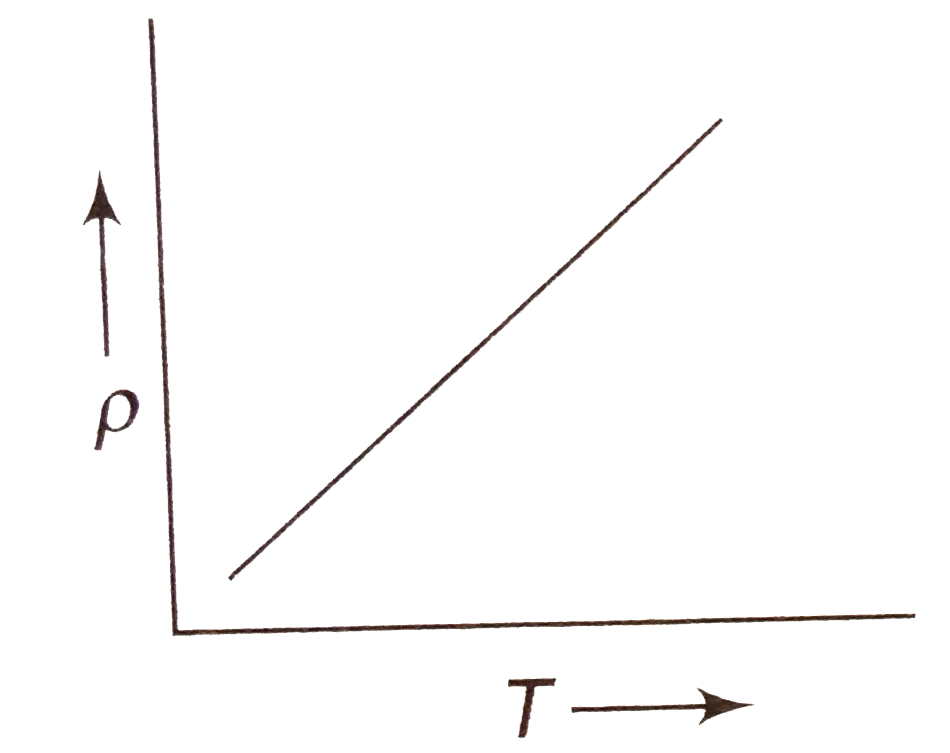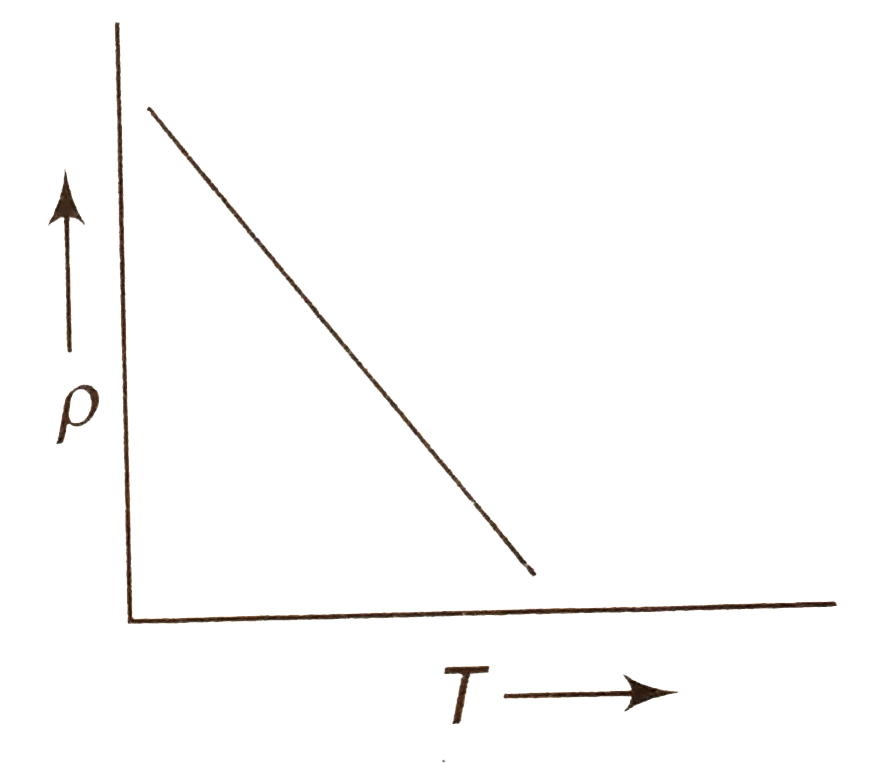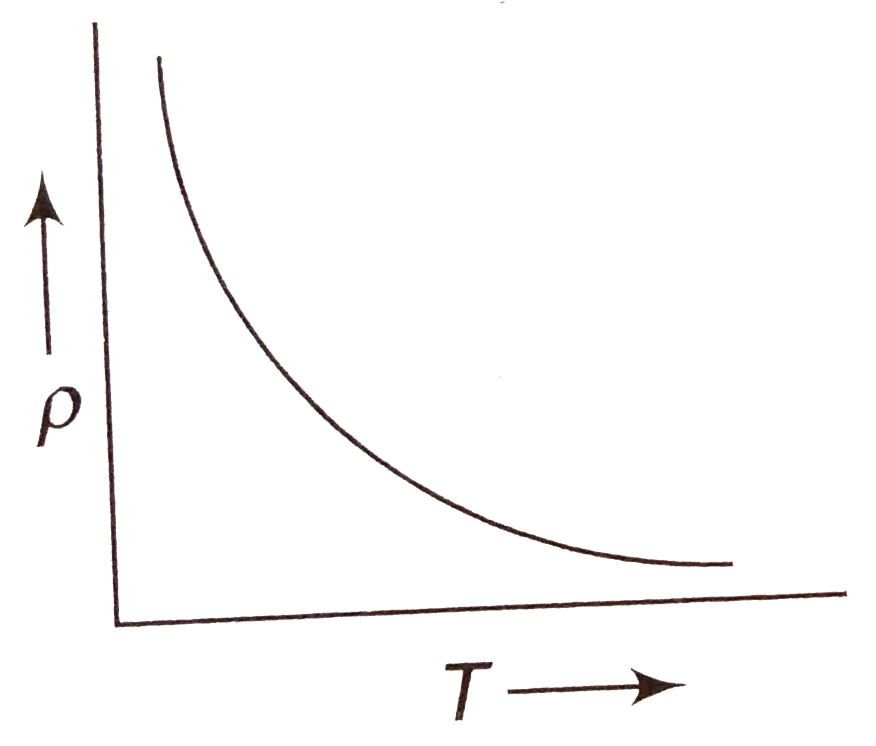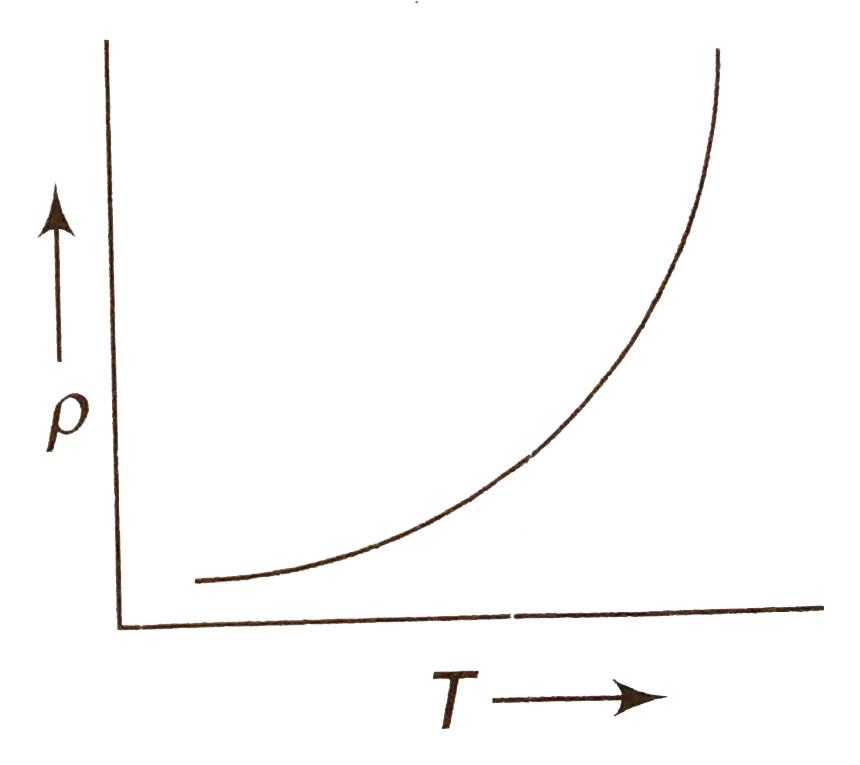Compare and explain the temperature dependence of resistivity in case of a conductor, a semiconductor and insulator with proper examples.
To compare and explain the temperature dependence of resistivity in conductors, semiconductors, and insulators, we can follow these steps:
Step 1: Understanding Conductors
- Example: Copper (Cu)
- In conductors like copper, there are many free electrons available for conduction.
- As the temperature increases, the kinetic energy of these free electrons also increases.
- This increase in kinetic energy leads to more frequent collisions with the lattice ions of the conductor.
- Effect on Resistivity: The relaxation time (τ), which is the average time between collisions, decreases. Since resistivity (ρ) is inversely proportional to τ (ρ ∝ 1/τ), an increase in temperature results in an increase in resistivity.
- Conclusion: For conductors, resistivity increases with an increase in temperature.
Step 2: Understanding Semiconductors
- Example: Silicon (Si)
- Semiconductors have fewer free electrons compared to conductors. The electrons are usually bound in the valence band.
- When temperature increases, some electrons gain enough energy to jump from the valence band to the conduction band, overcoming the energy band gap.
- Effect on Resistivity: As more electrons move to the conduction band, the conductivity increases, leading to a decrease in resistivity.
- Conclusion: For semiconductors, resistivity decreases with an increase in temperature.
Step 3: Understanding Insulators
- Example: Rubber
- Insulators have a very high energy band gap, which means that very few electrons can jump from the valence band to the conduction band even at elevated temperatures.
- However, as the temperature increases, a small number of electrons can still gain enough energy to cross the band gap.
- Effect on Resistivity: Similar to semiconductors, the conductivity increases slightly, leading to a decrease in resistivity.
- Conclusion: For insulators, resistivity also decreases with an increase in temperature, but the effect is much less pronounced than in semiconductors.
Summary of Temperature Dependence of Resistivity
- Conductors: Resistivity increases with temperature (e.g., Copper).
- Semiconductors: Resistivity decreases with temperature (e.g., Silicon).
- Insulators: Resistivity decreases with temperature (e.g., Rubber), but to a lesser extent than semiconductors.
- Example: Copper (Cu)
- In conductors like copper, there are many free electrons available for conduction.
- As the temperature increases, the kinetic energy of these free electrons also increases.
- This increase in kinetic energy leads to more frequent collisions with the lattice ions of the conductor.
- Effect on Resistivity: The relaxation time (τ), which is the average time between collisions, decreases. Since resistivity (ρ) is inversely proportional to τ (ρ ∝ 1/τ), an increase in temperature results in an increase in resistivity.
- Conclusion: For conductors, resistivity increases with an increase in temperature.
- Example: Silicon (Si)
- Semiconductors have fewer free electrons compared to conductors. The electrons are usually bound in the valence band.
- When temperature increases, some electrons gain enough energy to jump from the valence band to the conduction band, overcoming the energy band gap.
- Effect on Resistivity: As more electrons move to the conduction band, the conductivity increases, leading to a decrease in resistivity.
- Conclusion: For semiconductors, resistivity decreases with an increase in temperature.
- Example: Rubber
- Insulators have a very high energy band gap, which means that very few electrons can jump from the valence band to the conduction band even at elevated temperatures.
- However, as the temperature increases, a small number of electrons can still gain enough energy to cross the band gap.
- Effect on Resistivity: Similar to semiconductors, the conductivity increases slightly, leading to a decrease in resistivity.
- Conclusion: For insulators, resistivity also decreases with an increase in temperature, but the effect is much less pronounced than in semiconductors.
- Conductors: Resistivity increases with temperature (e.g., Copper).
- Semiconductors: Resistivity decreases with temperature (e.g., Silicon).
- Insulators: Resistivity decreases with temperature (e.g., Rubber), but to a lesser extent than semiconductors.
Topper's Solved these Questions
- CURRENT ELECTRICITYBook:MODERN PUBLICATIONChapter:CURRENT ELECTRICITYExercise:REVISION EXERCISES (NUMERICAL PROBLEMS)
Explore 24 Videos
- CURRENT ELECTRICITYBook:MODERN PUBLICATIONChapter:CURRENT ELECTRICITYExercise:Objective Type Questions (MULTIPLE CHOICE QUESTIONS) (A. MULTIPLE CHOICE QUESTIONS WITH ONLY ONE CORRECT ANSWER)
Explore 36 Videos
- CURRENT ELECTRICITYBook:MODERN PUBLICATIONChapter:CURRENT ELECTRICITYExercise:REVISION EXERCISES (SHORT ANSWER QUESTIONS)
Explore 37 Videos
- ATOMS Book:MODERN PUBLICATIONChapter:ATOMS Exercise:Chapter Practice Test
Explore 16 Videos
- DUAL NATURE OF RADIATION AND MATTER Book:MODERN PUBLICATIONChapter:DUAL NATURE OF RADIATION AND MATTER Exercise:CHAPTER PRACTICE TEST
Explore 15 Videos
Similar Questions
Knowledge Check
The temperature coefficient of resistivity of a semiconductor is
Aalways postive.Balways negative.Czero.Deither zero or positive.By increasing the temperature, the specific resistance of a conductor and a semiconductor
AIncreases for both.BDecreases for both.CIncreases for a conductor and decreases for a semiconductor.DDecreases for a conductor and increases for a semiconductor.The temperature (T) dependence of resistivity (rho) of a semiconductor is represented by :
A B
B C
C D
D
What are conductors and insulators? Give examples also.
View SolutionResistance || temperature dependence OF resistance
View SolutionWhat is the order of energy gap in a conductor, semiconductor and insulator
View SolutionThe temperature coefficient of resistance of a conductor is
View SolutionThe temperature coefficient of resistance of a semiconductor
View Solution

